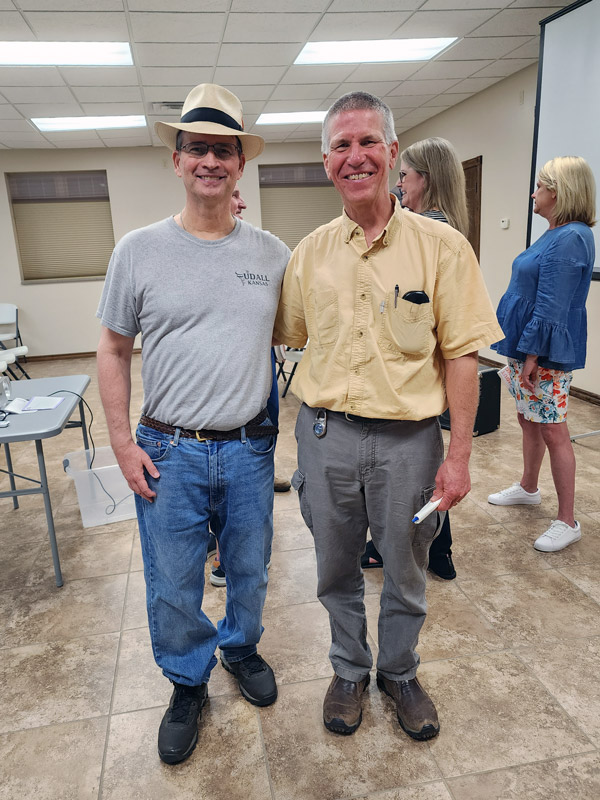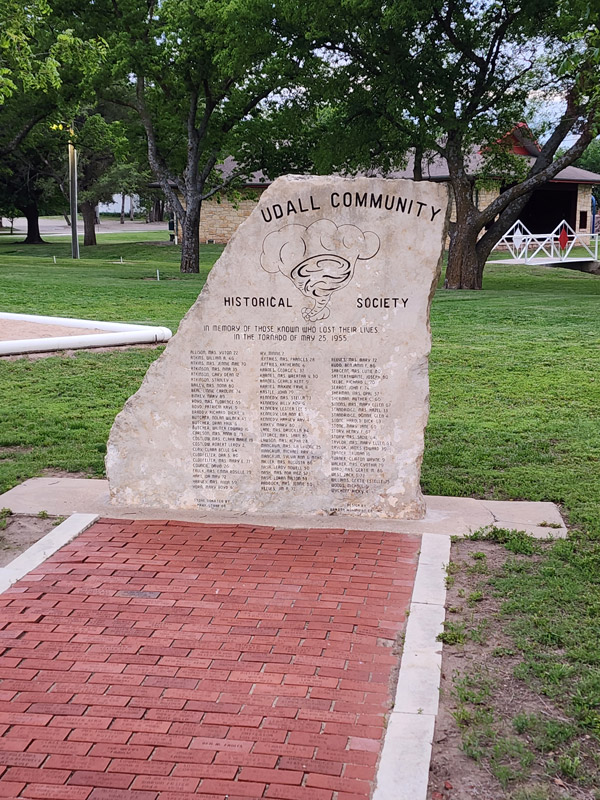Get to the Basement!
“Why has the sun gone down in the middle of the afternoon?”
I still didn’t need all of the fingers on one hand to tell you how old I was, yet I knew something was terribly wrong.
All the lights were on in our house even though it was the middle of the day. Mom had lit several votive candles and was glancing out the window nervously as she ironed clothes.
The window curtains fluttered from a breeze that offered no comfort. When I looked outside, the sky was so dark I could barely see our shed a few dozen yards to the east.
Dad and my older brothers were outside, checking on our horses and livestock, when all of a sudden, Dad opened the back screen door and hollered, “Get to the basement!”
I scampered down those stairs as fast as I could, but I never heard my feet hit the concrete floor because at that same moment the windows in our root cellar exploded. That tiny room was where Mom stored the fruit and vegetables she canned, as well as any canned goods we got from the store. I’m glad the door to that room was shut (by family rule), or I might have been hit by flying glass.
I ran to the hired man’s bedroom down the hall and sat on his bed, lowering my chin to my chest. A deafening roar arrived moments later. I was convinced the house was going to be torn apart. The air pressure changed so quickly I thought my ear drums were going to pop and my head would explode. I pressed fingers into my ears against the pressure and to drown out the roar.
A railroad line ran right next to our farmstead, and we regularly heard freight trains pass by. I never understood why in later years I heard people say that a tornado sounded like a freight train. None of the tornadoes I have been close enough to hear sounded like a train. This one sounded like a 747 landing on top of us.
It seemed to go on forever, and few moments of relief in the decades since have matched what I felt when that noise finally faded away, and we were unharmed. While other parts of the farmstead sustained damage, the house was largely spared.
My peace of mind wasn’t, though. For many years after that dark May day, I would be scared any time the clouds looked menacing. I studied anything I could find about tornadoes, trying to learn more about when and where they strike. Out of curiosity, I wondered where the worst tornado in Kansas history had struck.
That’s when I learned about Udall.
The small town about 20 miles from Wichita was decimated by a massive tornado late at night on May 25, 1955. The tornado killed 77 people in Udall and another five people on a farm outside of town. More than half a century later, it remains the deadliest twister in the history of a state known for tornadoes.
Further research revealed it occurred 10 years to the day before the tornado that struck our farm as I hunkered down in our basement, wondering if I would live to see another sunrise.
As a reporter for the Eagle, I would eventually write stories marking the 40th and 50th anniversaries of the Udall tornado. Listening to survivors talk about that day and the aftermath have always been powerful and poignant for me.
When I learned a new book about the Udall tornado has just been released, I made it a point to go to Udall to hear the author talk about the book on the anniversary of the tornado. I wasn’t sure how many people would be there.
When I wrote the 40th anniversary story, I made arrangements for several survivors to meet at the local café to share their memories. Several people declined my invitation, saying those memories were still too painful.
Almost no one wanted to talk about the tornado ten years later, too. That’s in the past, they said. No one cares anymore. It’s a new day, a new Udall. We’re not just defined by the tornado anymore.
I was pleasantly surprised to see vehicles lining Udall’s main street as I arrived. I had to park a few blocks from the community building just to find a space. The room was packed as more than 130 filled the chairs and lined the walls.
The number of survivors still with us is dwindling – it’s been 68 years, after all – but I recognized a few names and faces and it was good to catch up with them. I was able to spend a few moments with the author, Jim Minick, and I told him I was glad he wrote the book. New audiences need to hear the stories from the night that Udall died, and what it took for the small town to rebuild.
All too often these days, we’re seeing what happens when we forget history. The Udall tornado led to profound changes in forecasting and technology and how people react to the threat of tornadoes. The ripple effects of that devastating May evening are still felt today.
I have written countless stories and blog posts about tornadoes in my career as a journalist, and lost count of how many I have seen as an occasional storm chaser or growing up on our farm. I haven’t included tornadoes in any of my fiction because reality trumps any fictional accounts of tornadoes that I have read.
Perhaps a tornado will make its way into a future book, but only time will tell.
- 2005: The night Udall died | The Wichita Eagle (kansas.com)
- 1995: Survivors look back 40 years at Kansas’ deadliest tornado | The Wichita Eagle
 Stan Finger with Jim Minick
Stan Finger with Jim Minick
 Udall Tornado Memorial
Udall Tornado Memorial